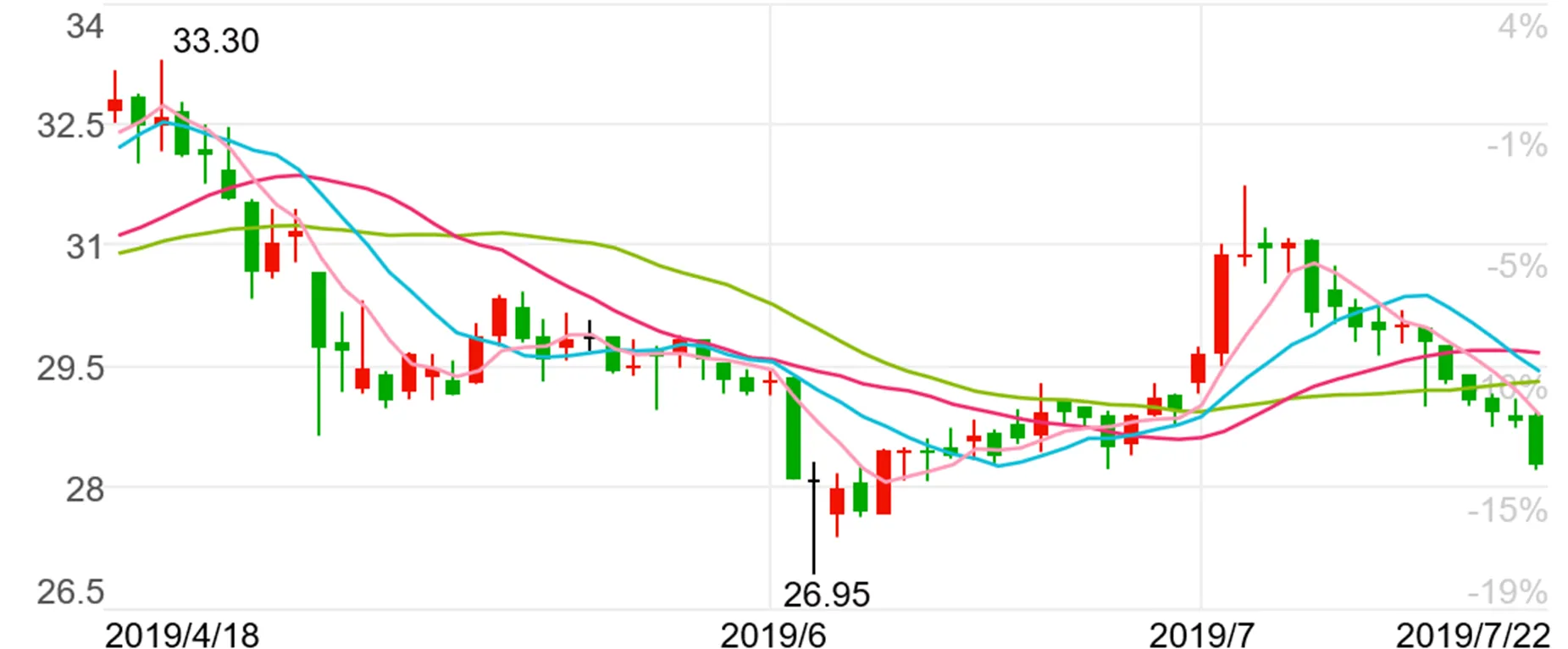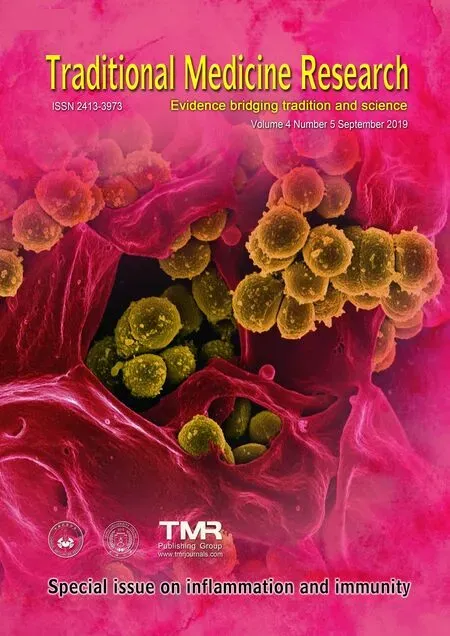Prescribing Chinese patent medicines without traditional Chinese medicine training is now banned in China
Editor Group of Traditional Medicine Research
Prescribing Chinese patent medicines without traditional Chinese medicine training is now banned in China
Editor Group of

Figure 1 Tong Ren Tang (600085), the market K-line
On July 1, 2019, the website of the National Health Commission of the People’s Republic of China issued the “Notice on printing and distributing the first batch of national key monitoring and rational drugs (chemicals and biological products)” (National Health Office Medical Letter [2019] No. 558) [1], where the third article stipulates: “Other types of physicians, after not less than one year of systematically studying Chinese medicine professional knowledge and passing the examination, in accordance with the basic principles of syndrome differentiation, can issue prescriptions for Chinese patent medicine”. This mandates that Western medicine doctors in China no longer prescribe Chinese patent medicines (CPM) without completing the required training. Before the implementation of this regulation, it was common for Western medicine doctors to prescribe CPM. The market for CPM is quite large [2]. Many traditional Chinese medicine (TCM) doctors believe that Western medicine doctors who have not received specific training in TCM run the risk of incorrectly prescribing CPM [3]. In fact, the vast majority of CPM are subject to the same evaluation criteria and assessment procedures as are chemical drugs. CPM are evaluated using modern medical evaluation systems, are evaluated after they are marketed, and are subjected to standardized clinical trials rather than to evaluation using the TCM theory. Patients experiencing toxic effects from the use of TCM are found to be genetically susceptible to the effects of certain herb ingredient. For example, a recent study found that the genetic basis for susceptibility to Heshouwu (), resulting in liver damage, is the HLA-B*35:01 allele [4]. It is difficult for Western medicine doctors to identify which patients may be genetically susceptible to the toxic effects of Heshouwu (). The method of syndrome differentiation based on TCM theory has also proven to be unsuccessful in identifying this susceptibility.
In China, Chinese and Western medicine systems are equally important, and both are held in high regard [5]. As early as the 1950s, China organized various “Western Medicine Learning TCM” classes [6] and successfully trained a group of integrated medicine physicians. At the present time, 70% of CPM are prescribed by Western medicine doctors [7]. This above-mentioned regulation restricts Western medicine doctors from prescribing CPM that patients can purchase from pharmacies, and, furthermore, compels Western medicine doctors to gain knowledge in TCM. We question whether this will result in Western medicine doctors abandoning the use of CPM. Interestingly, the stock prices of CPM companies offered in the A-share market fell after these new regulations were announced.
:
Editor Group of Traditional Medicine Research. Prescribing Chinese patent medicines without traditional Chinese medicine training is now banned in China. Traditional Medicine Research 2019, 4 (5): 222-223.
1. National Health Commission of the People’s Republic of China [Internet]. Notice on printing and distributing the first batch of national key monitoring and rational drugs (chemicals and biological products). [cited 2019 July 25]. Available from: http://www.nhc.gov.cn/yzygj/s7659/201907/d356ce8a4ba1461ca66c544724dffc5e.shtml
2. CBG [Internet]. In 2019, industry of TCM is developing rapidly and its market capacity is expanding continuously. [cited 2019 July 25]. Available from: http://free.chinabaogao.com/yiyao/201905/05541b432019.html
3. Liu YH. Clinical compatibility of Chinese and Western medicines and analysis of irrational use of other common Chinese patent medicines. Chin Clin Ration Drug Use 2019, 12: 5-7. (Chinese)
4. Li C, Rao T, Chen X,. HLA‐B*35:01 Allele Is a Potential Biomarker for Predicting Polygonum multiflorum–Induced Liver Injury in Humans. Hepatology, 2019, 70: 346-357.
5. XinHua net [Internet]. White Paper-traditional Chinese medicine in China. [cited 2019 July 25]. Available from: http://www.xinhuanet.com//politics/2016-12/06/c_1120064848.htm?from=singlemessage
6. Huang YQ. Study on the movement of Western medicine physicians learning Chinese medicine in the early period of the founding of the People's Republic of China (1955-1959). Guangzhou University of Traditional Chinese Medicine, 2006. (Chinese)
7. National Administration of Traditional Chinese Medicine [Internet], Zhang Hongchun, member of the National Committee of the Chinese People's Political Consultative Conference: Western medicine physicians must be trained and evaluated. [cited 2019 July 25]. Available from: http://www.satcm.gov.cn/xinxifabu/gedidongtai/2019-03-05/9171.html
10.12032/TMR20190725126
 Traditional Medicine Research2019年5期
Traditional Medicine Research2019年5期
- Traditional Medicine Research的其它文章
- Assessment of microwave assisted and hydrodistllation extraction on Echinops persicus essential oils chemical composition and evaluation of its biological activity
- Quantitation of phytochemical constituents of Fumaria vaillantii L. with different extract methods
- Immunomodulatory effect of schisandrae oil in mouse model of autoimmune hepatitis induced by concanavalin A
- Natural products as a crucial source of anti-inflammatory drugs: recent trends and advancements
- Plant distribution and pharmacological activity of flavonoids
- Antitumor applications of nano-traditional Chinese medicine
